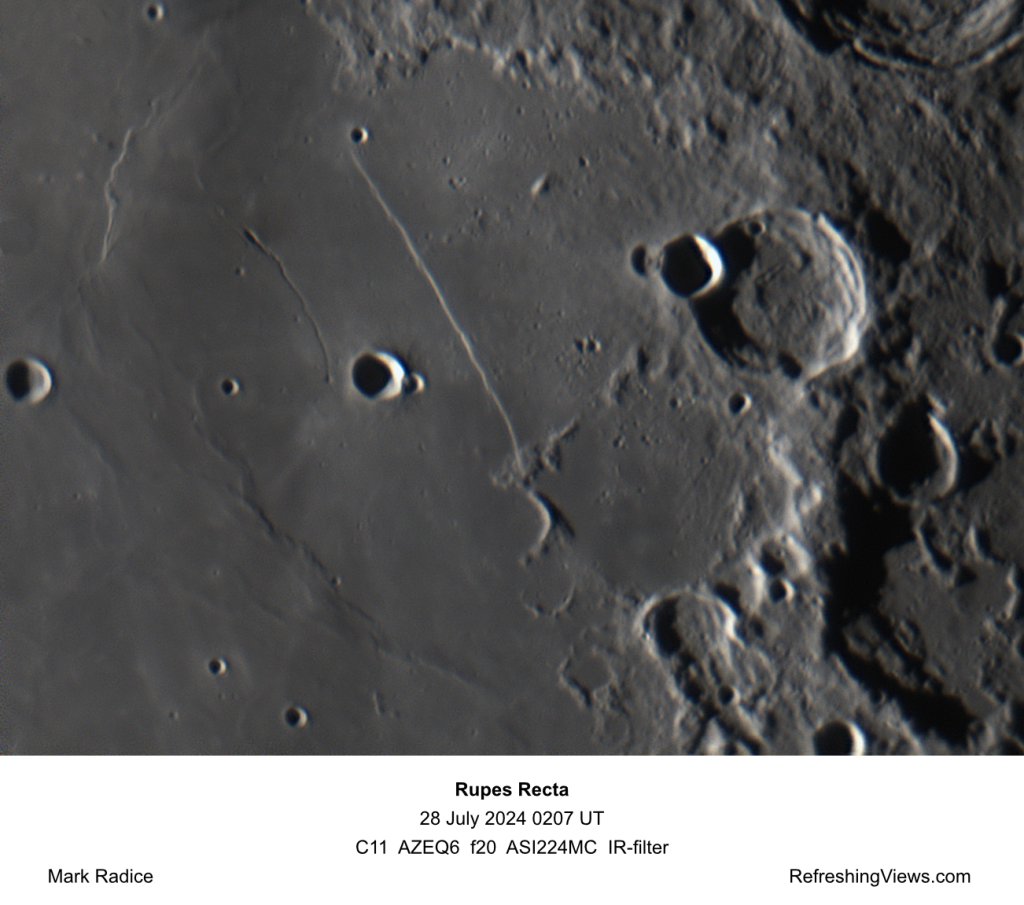This is Rupes Recta, a 3.2 billion year old escarpment on the lunar surface and it is a fantastic sight in even smaller telescopes. Some liken Rupes Recta to a sword with a small, half-flooded crater forming the handle and the blade as Rupes Recta itself.
These images below taken only ~ 24 hours apart show Rupes Recta on the morning of 28 and 29 July 2024 as seen through my Celestron C11. Here we used a high speed camera to take thousands of video frames and then use freeware to reject those blurred by the atmosphere so we can then stack and process the sharp frames.
Now Rupes Recta is Latin for Straight Wall but it is neither straight nor a wall!
The Wall spans approximately 110 kilometres in length and rises to about 240-300 meters in height with a slope varying along its length of between 7 and 40 degrees depending on your source.
In fact, Rupes Recta is a lunar fault, where a section of the Moon’s crust has been displaced. It was likely formed as Mare Nubium sank under the weight of its lava flows leading to a huge slip that formed the feature we see today.
Nearby is another intriguing feature, Rima Birt a channel cut by flowing lava in the lunar surface.
Furthermore, it is located in a ghostly crater known informally as Ancient Thebit whose western rim is buried under tons of lava leaving only a shadowy outline of the crater rim.
The best time to observe this feature is around the first and last quarter phase of the Moon. At last quarter it is illuminated by the sun and appears as a bright, sunlit slope whereas at first quarter it casts a shadow.

So let us know if you’ve seen it and don’t forget to follow for more observations of the night sky.
Geek stuff:
Celestron C11 x2 Televue Powermate to give f20
ASI224MC with IR-filter and ADC
Mounted on AZEQ6 in my roll off roof shed.
Best 1,000 frames from 5,000 stacked and sharpened.